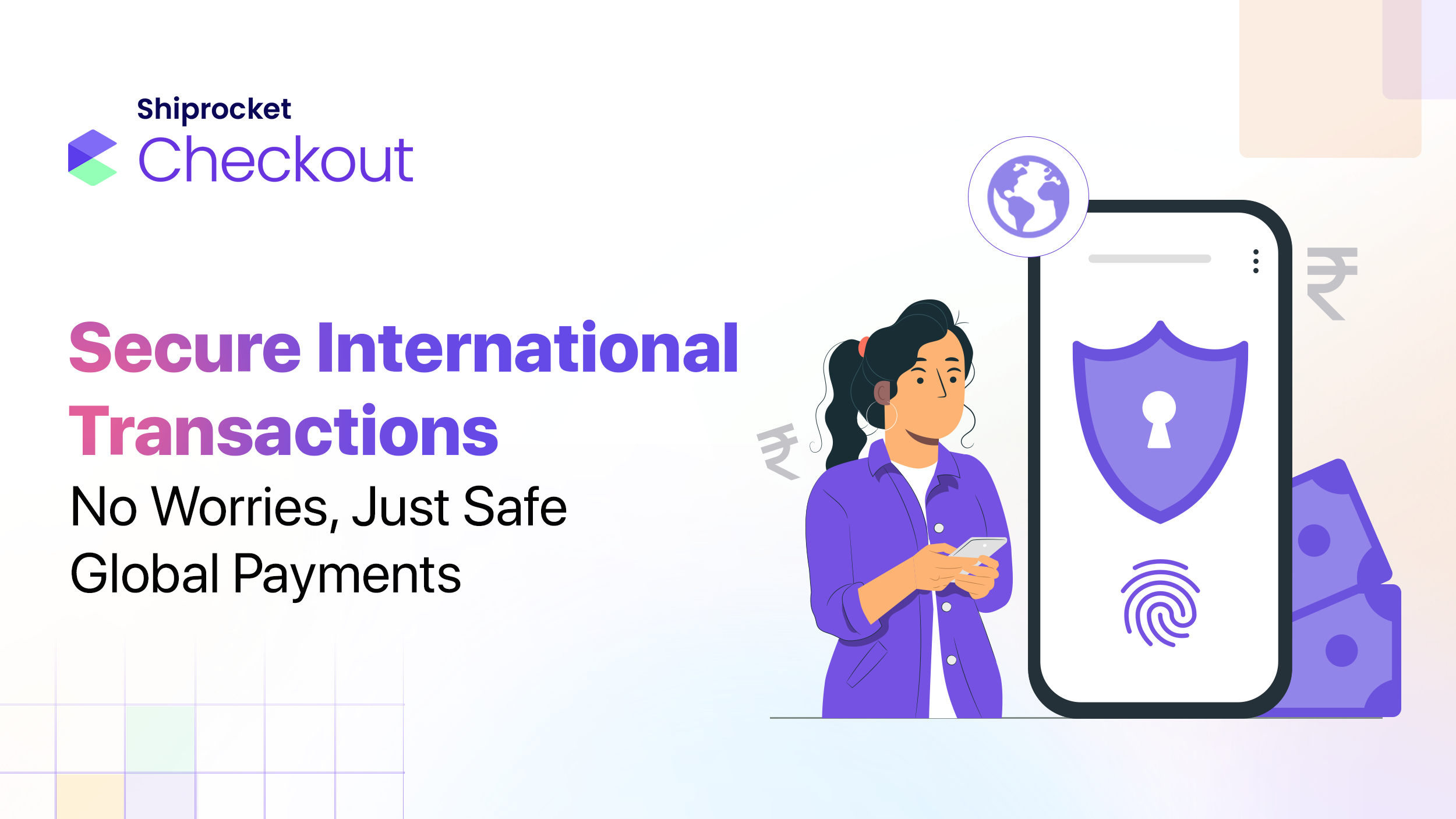Introductory Price Techniques That Help eCommerce Brands Grow Fast
- What Does an Introductory Price Mean for New Products?
- Penetration Pricing for Rapid Market Entry
- Skimming Pricing to Maximise Early Profit Margins
- Bundling Strategies to Increase Average Order Value
- Leveraging Discounts and Time-Limited Offers Effectively
- Converting Browsers into Buyers in a Crowded eCommerce Market
- Building Loyalty with Smart Introductory Offers
- How Shiprocket Checkout Simplifies Business Operations?
- Conclusion
Imagine launching a new product in the market with a significantly high price; your sales are stagnant, and the product isn’t garnering much attention. Often, it’s not the product that’s the problem but the pricing strategy behind it. The price you introduce a product with can heavily influence how customers perceive it and whether they decide to buy.
When applied strategically, introductory pricing can become a powerful medium for growth. However, many eCommerce brands fail to understand what exactly an introductory price is and how to leverage it to generate better profits.
This blog discusses introductory pricing strategies and their effects on converting visitors into loyal customers.
What Does an Introductory Price Mean for New Products?
In simple terms, the introductory price is the cost a retailer/manufacturer sets before launching a new product on the market. The companies initially set lower prices to increase sales and their market share. These marginal-profit prices make new buyers feel that they are getting more value at a lesser cost. Slowly, the brands raise their product prices without the fear of losing customers.
For example, a consumer has been using a skincare cream for some time and sees a new cream offering the exact same benefits at a lower price. The introductory price attracts the individual and turns them into loyal customers if their purpose is fulfilled.
Brands implement two kinds of introductory pricing strategies, depending on:
- Objectives
- Market positioning
- Audience characteristics
The next section discusses which strategies you can implement to increase your market share.
Penetration Pricing for Rapid Market Entry
Penetration pricing is a strategy where a brand intentionally launches a product at a low price to attract new customers. Here’s how this strategy helps acquire a new market quickly:
- The brand sets an initial low price for price-sensitive customers.
- Once customers become accustomed to the product, they become loyal buyers.
- The customer base expands, and the brand establishes a good market presence.
- This customer retention and market share enable the brand to gradually increase its product prices.
- Since the product has become a part of the buyer’s purchase list, the price hike doesn’t meet resistance. It enables brands to increase their sales and profit margins.
An example of penetrating pricing is Netflix, the most popular streaming platform. It launched with a $5.99 monthly subscription, aiming to garner as many subscribers as possible quickly. Once they acquired a substantial loyal customer base, their price hikes didn’t receive dismissal.
Skimming Pricing to Maximise Early Profit Margins
Skimming prices, a completely reverse tactic, where a brand launches a product at a high cost but decreases it over time. The initial price is considered a symbol of status and premium experience, attracting a similar category of customers.
As the company gradually reduces its product prices, it attracts price-sensitive customers who prefer to buy once the products become affordable. Here’s how the skimming pricing strategy works:
- Customers with high purchasing power buy the products as soon as they are launched, maximising the brand’s profits at the early stages.
- The strong margins in the beginning minimise the risk of lost opportunities, regardless of the sales numbers.
For example, Apple launches every new model with a soaring price, drawing loyal customers who value the brand status and symbol. It allows the company to generate high revenue from the beginning. After a specific period, the brand reduces its prices and releases different offers. It attracts customers who wait for Apple products to become more affordable.
Bundling Strategies to Increase Average Order Value
Retail eCommerce sales are projected to reach $4.3 trillion in 2025. This estimated number indicates the fierce competition in the online market. Therefore, if the companies don’t take the proper steps, they risk losing out.
Along with the pricing strategies discussed above, brands also focus on creating bundle offerings to attract buyers. Multiple products or services are combined into lucrative packages, increasing the value of the offer and encouraging better purchasing decisions. This introductory price strategy is well-suited for tiered pricing models, enabling customers to choose from various offers tailored to their budget.
Leveraging Discounts and Time-Limited Offers Effectively
Limited-time discounts and offers create a sense of urgency among customers, prompting them to make impulsive purchases, which leads to improved sales. This discounting scheme is part of a dynamic pricing strategy, allowing you to adjust prices as demand and response change. The prices can also be used initially as an introductory price scheme and later as a sales technique to bring back customers.
Several brands, especially in the lifestyle sector, release seasonal sales for a limited time to attract customers. These offers make buyers feel that they will lose out on the best prices if they don’t act now.
Converting Browsers into Buyers in a Crowded eCommerce Market
Introductory prices reduce the financial barrier to entering a new product into the market. Any user searching for a product in your category would look for a balance between price and value. By initially marginalising your profit and reducing costs, your chances of turning a browser into a buyer increase.
Customers who are unsure about the quality of the product will only be willing to try if the price is low. Therefore, the low initial price strategy is the right move if you want to establish your presence in a crowded eCommerce market. It acts as an incentive for customers to take the leap and buy the product.
Building Loyalty with Smart Introductory Offers
Introductory pricing alone won’t build customer loyalty, especially if the product lacks quality or the experience falls short. Your best approach is to combine introductory prices with high-quality products and after-sales customer service. Such steps help build a loyal customer base. If the customer experience is positive, they will likely remain loyal even if prices increase in the future.
How Shiprocket Checkout Simplifies Business Operations?
You want to launch new products with introductory prices and limited-time discounts to lure customers. However, the customers might not complete the purchase if the checkout process is not smooth. It results in increased cart abandonment rates.
Such problems can be easily resolved with Shiprocket Checkout, a tech-enabled solution that boosts conversion rates. The online platform offers autofill addresses, secure logins, coupon personalisation, and estimated delivery date features. Your job is to set the introductory prices and leave the rest to Shiprocket’s Checkout integration.
Conclusion
Even well-established companies use introductory price strategies when launching a new product or entering a new market. The pricing plan helps increase the customer base and ultimately outperform the competition. Strategies like penetration pricing, skimming pricing, and bundling products target different buyer requirements. Introduce value-added discounts and offers to create a sense of urgency among buyers. This approach can help you secure revenues and sustainable profit margins throughout the product lifecycle.



